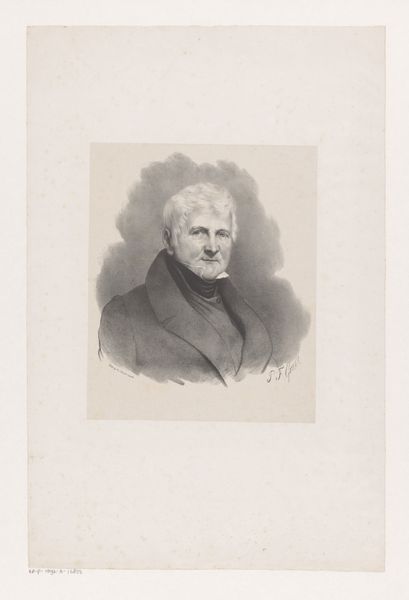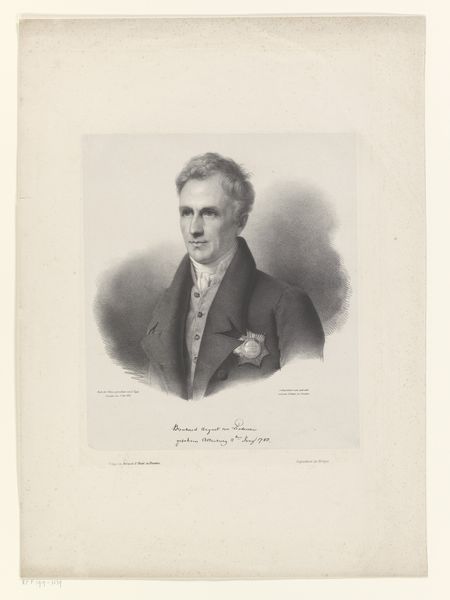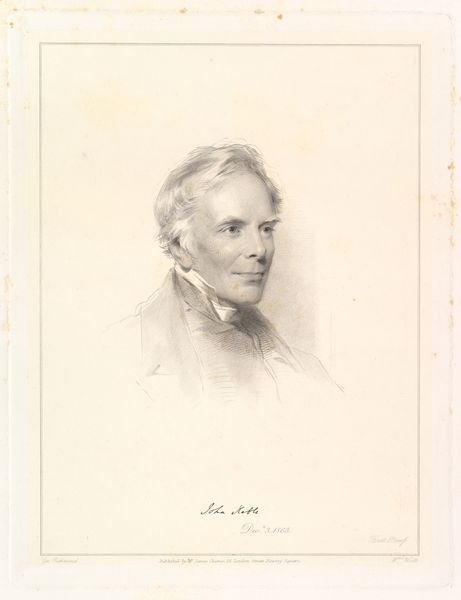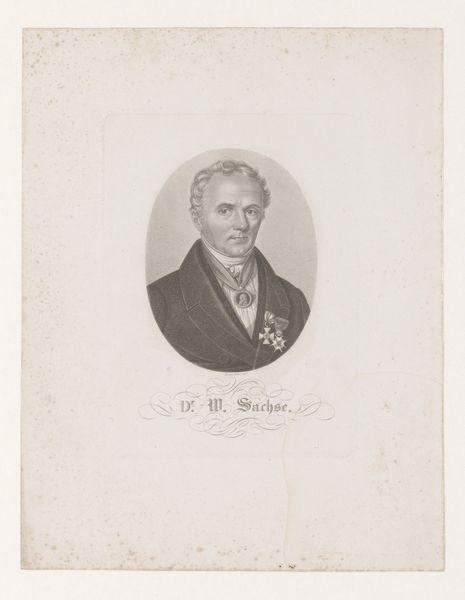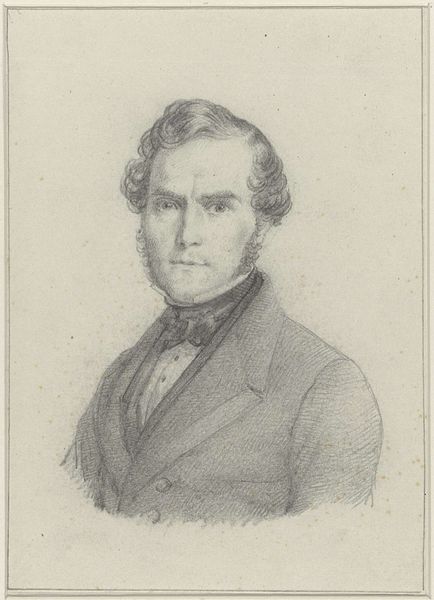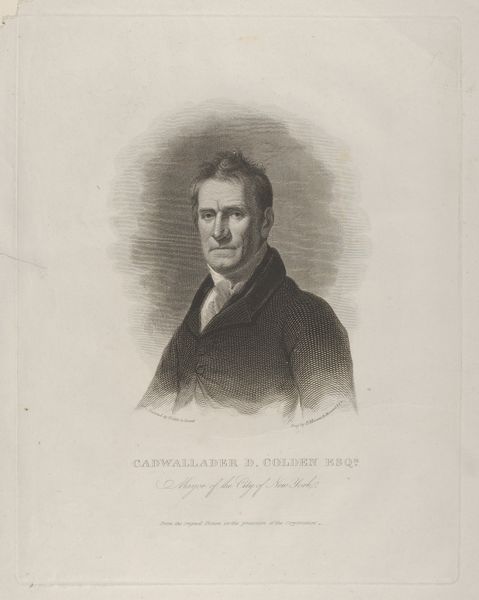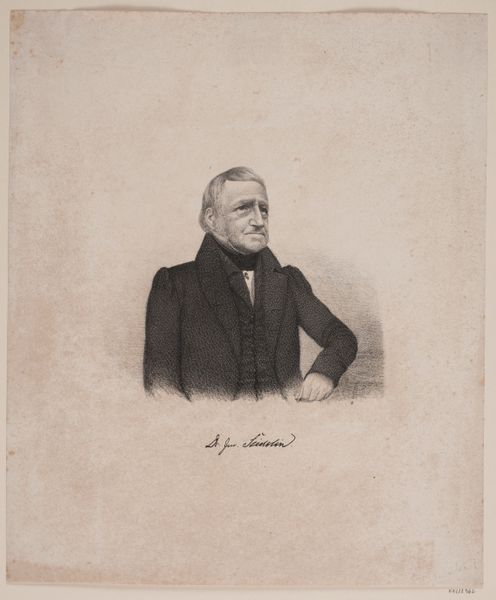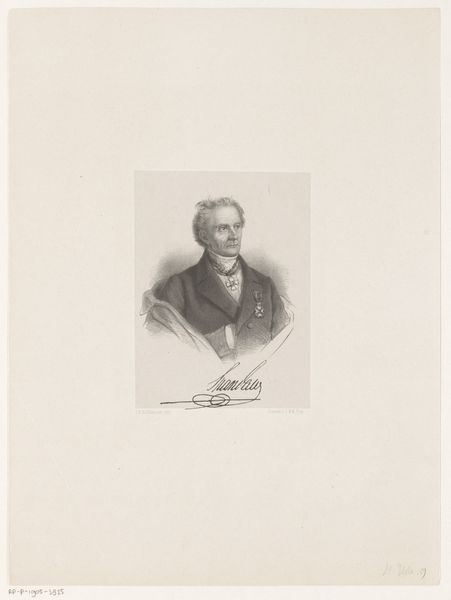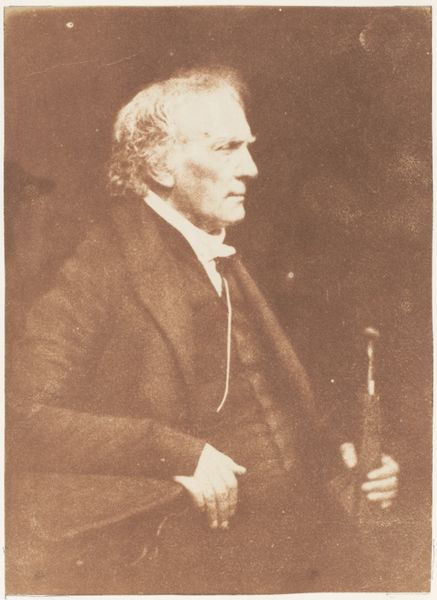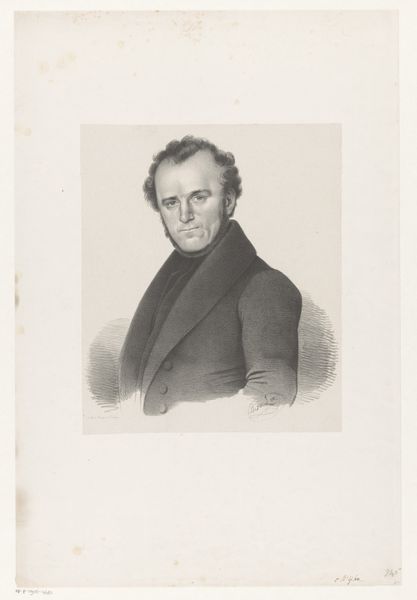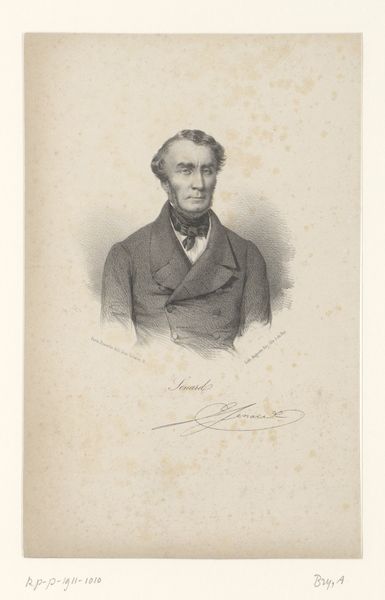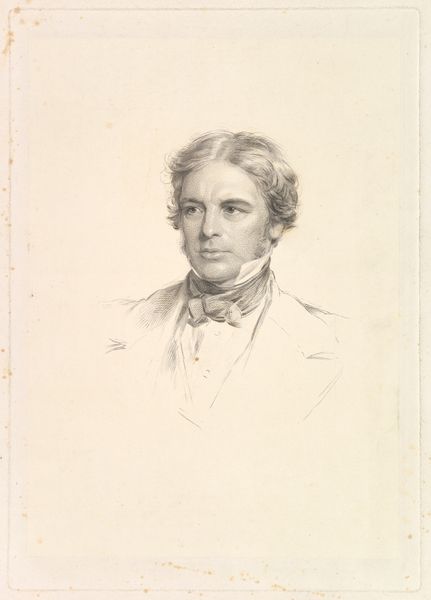
drawing, pencil
#
pencil drawn
#
drawing
#
pencil sketch
#
pencil drawing
#
pencil
#
academic-art
#
realism
Dimensions: height 146 mm, width 105 mm
Copyright: Rijks Museum: Open Domain
Curator: We are looking at "Portret van Pieter de Decker" created in 1891 by Auguste Danse. It’s a pencil drawing, currently residing here at the Rijksmuseum. What's your initial reaction to this work? Editor: My first impression is that it feels quite formal and reserved, almost austere. The monochrome palette and the subject’s direct gaze create a serious mood. It makes me wonder about the sitter and the purpose behind creating this image. Curator: The use of pencil lends an intriguing aspect to the artwork. Drawings often function as preliminary sketches, and thus it hints at immediacy and accessibility. The technique can imply both intimacy and preparation. I’m drawn to his face: it mirrors lived experience. Do you think the artist’s choice in media reflects a specific message or perhaps an emotional intent? Editor: Definitely. The use of pencil creates a sense of vulnerability and immediacy, almost as if we are catching a glimpse of the sitter’s raw essence. This piece was rendered during a time of significant social upheaval, with evolving attitudes towards class and representation. How do we situate De Decker's representation in that specific context? Curator: It can be seen as a depiction that preserves the likeness and essence of its subject as a prominent symbol within a social hierarchy that was starting to face disruption. Notice the almost symbolic representation of the neatly pressed jacket and formal dress—these reflect an order that artists sought to honor in changing times. Editor: I see what you mean. Viewing it from today's perspectives, it seems to subtly embody a conservative era attempting to cement its image against the rising tides of social change. Curator: This piece leaves us considering portraiture and symbolism—particularly how visual representations serve purposes tied to collective memory and the preservation of personal and cultural legacies. Editor: Indeed, reflecting on this work makes us more sensitive to art's capacity to crystallize the complex dynamics of person, history, and era into a single potent image.
Comments
No comments
Be the first to comment and join the conversation on the ultimate creative platform.
